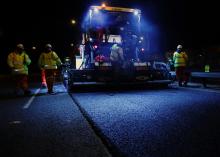
Authorities in London have started a new scheme designed to remove the most dangerous Heavy Goods Vehicles (HGVs) from the UK capital's streets.
The Direct Vision Standard (DVS) has been launched by the Mayor of London Sadiq Khan, Transport for London (TfL) and London Councils.
The standard is designed to tackle road danger at its source by minimising HGV blind spots which contribute to many deaths and life-changing injuries. Based on how much a driver can see directly through their cab windows, the star system rates HGVs over 12 tonnes from zero (lowest) to five (highest). HGVs will need to meet a minimum ‘one-star’ rating by the time enforcement begins to enable them to operate in London, or will need to fit ‘Safe System’ measures to improve the vehicle’s safety.
Big lorries are disproportionately involved in fatal collisions. Whilst they account for just four per cent of the overall miles driven in the capital, between 2015 and 2017, HGVs were involved in 63% of fatal collisions involving cyclists and 25% involving pedestrians.
Operators can now apply for a HGV Safety Permit ahead of enforcement beginning on 26 October 2020. HGV operators who fail to meet the new minimum safety standards and obtain a permit will be issued a penalty charge for driving in the capital. The Direct Vision Standard will operate 24 hours a day, seven days a week and will be enforced within the Greater London Boundary.
Sadiq Khan commented: “I’m proud of our world-leading plans to remove the most dangerous lorries from London’s streets. So many of the tragic deaths on our roads involve HGVs and this new scheme will help save lives."
David Hart, UK supply chain director for building materials company CEMEX, said: “DVS is a landmark scheme that will ensure that all road users and pedestrians are safe as they come across HGVs while moving around the city. We fully support the programme; safety is CEMEX’s number one priority and informs all aspects of our operation."
Owners of vehicles rated zero-star will need to improve the overall safety of their vehicle by fitting a ‘Safe System’ to reduce the risk it presents to people walking, cycling and riding motorcycles before enforcement begins. These include a camera monitoring system, a noise alert when turning left and sensors. Fitting the ‘Safe System’ will not improve a vehicle's DVS star rating but will bring the safety standard of the vehicle up to allow operators to apply for a Safety Permit.








